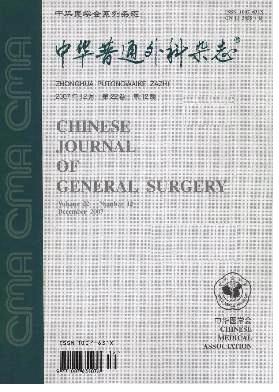Clinical significance of contrast-enhanced ultrasound in surgical treatment strategy of carotid stenosis
引用次数: 0
Abstract
Objective To analyze the clinical significance of contrast-enhanced ultrasound in the treatment of patients with carotid stenosis. Methods The clinical data of 89 patients with carotid stenosis was retrospectively analyzed.The morphology and stenosis of carotid plaques were observed by contrast-enhanced ultrasound, and analyzing the relationship between the patient′s clinical symptoms and treatment options. Results There were 66 males, 23 females, age ranging from 41 to 88 years.There were 147 plaques in 89 patients and 58 patients with bilateral lesions. The intensity of plaque ultrasound contrast was grade Ⅰ in 40 cases(27%), grade Ⅱ in 30(20%), grade Ⅲ in 31(21%), andgrade Ⅳ in 46(31%). The symptomatic group had higher CEUS strengths in grade Ⅲ(21.4%) and grade Ⅳ(37.9%). The difference was statistically significant between the two groups (P<0.05). Symptomatic group with high proportion of severe stenosis (44.7%) and occlusion (9.7%). It is narrower than that of asymptomatic group.The difference of stenosis was statistically significant between the two groups (P<0.05). Conclusion Contrast-enhanced ultrasound can dynamically and visually assess the distribution and density of carotid plaque morphology. It is useful for evaluating the treatment of patients with carotid stenosis. Key words: Carotid stenosis; Carotid endarteretomy; Carotid contrast-enhanced ultrasound超声造影在颈动脉狭窄手术治疗中的临床意义
目的分析超声造影在颈动脉狭窄治疗中的临床意义。方法回顾性分析89例颈动脉狭窄患者的临床资料。通过超声造影观察颈动脉斑块的形态和狭窄程度,分析患者临床症状与治疗方案的关系。结果男66例,女23例,年龄41~88岁。89例患者和58例双侧病变患者共有147个斑块。斑块超声造影强度Ⅰ级40例(27%),Ⅱ级30例(20%),Ⅲ级31例(21%),Ⅳ级46例(31%)。症状组Ⅲ级(21.4%)和Ⅳ级(37.9%)的CEUS强度较高,两组差异有统计学意义(P<0.05),症状组严重狭窄(44.7%)和闭塞(9.7%)的比例较高,较无症状组狭窄。结论超声造影能动态、直观地评价颈动脉斑块形态的分布和密度。它有助于评估颈动脉狭窄患者的治疗。关键词:颈动脉狭窄;颈动脉内膜切开术;颈动脉超声造影
本文章由计算机程序翻译,如有差异,请以英文原文为准。
求助全文
约1分钟内获得全文
求助全文

 求助内容:
求助内容: 应助结果提醒方式:
应助结果提醒方式:


